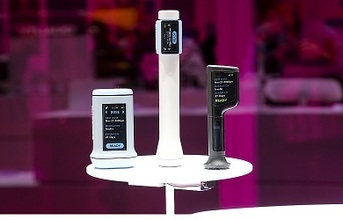
As per a FICCI-KPMG report, India’s healthcare sector is poised to touch a whopping US$280 billion in size by 2025 and grow at a compound annual growth rate of 16 percent.
The Healthcare Industry in India is one of the most important sectors not only for its social significance, but also in terms of generating revenue and employment. Due to increasing health awareness, penetration of health insurance and government healthcare schemes like Ayushmaan Bharat, the Indian Healthcare Sector is experiencing a new wave of opportunities. There are, however, some important challenges that the sector needs to address in order to make healthcare accessible, affordable and of consistent quality. As per a FICCI-KPMG report, India's healthcare sector is poised to touch a whopping US$280 billion in size by 2025 and grow at a compound annual growth rate of 16 percent. Medical Devices industry is one of the most important industries in the healthcare sector to ensure safety and well-being of patients across the world. Currently, India imports 80 percent of its medical devices and efforts need to be made to encourage manufacturing of medical devices locally. With the right use of innovation and technology, medical devices need to be constantly improvised and upgraded to meet the highest quality of standards and global norms.
Right framework
The Government of India made a very positive move last year by proposing a single regulatory framework for all medical devices to meet certain standards of quality and efficacy. India has approximately 800 medical device manufacturers, but standard regulation for materials used in medical devices still remains a major concern for the health sector. Currently, only 23 categories of medical devices are regulated in India under the Drugs and Cosmetics (D&C) Act and the recent concerns raised over the safety of patients requires bringing all medical devices under regulation. While the recent development from the Health Ministry to reach a consensus on the Medical Devices Bill to improve safety and promote domestic manufacturing of Medical Devices is underway, it will be equally important to ensure the right use of raw materials to maintain the highest quality standards.
Significance of right material
Selection of the right material for developing a medical device is the primary step considering parameters of functionality, logistics, budget, and prior standardisation set. Physical properties like density, transparency and electrical conductivity are essential for many devices and chemical properties like resistance to degradation through contact with lubricants, solvents, moistures or electromagnetic radiations also need to be critically noted. India is among the top 20 global medical devices market and is the fourth largest medical devices market in Asia after Japan, China, and South Korea. As per the industry estimates, the medical devices industry in India is poised to reach US$50 billion and keeping in mind the potential of future economic growth from the medical devices industry it is evident that India is on its way to becoming future-ready.
END



























